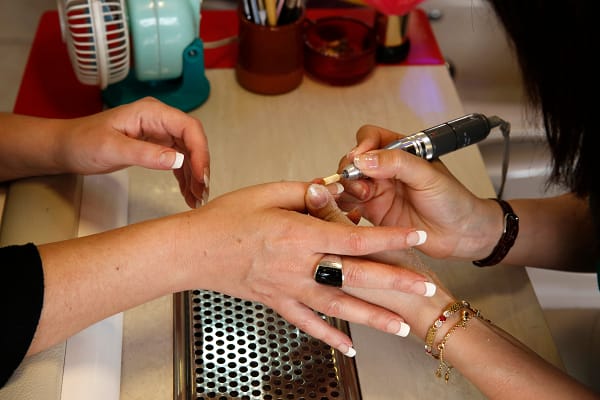The popularity of nail salons in the UK keeps growing, with these — alongside general beauty salons — lauded as the ‘saviours of the high street’ by the British Beauty Council.
It’s therefore a good time to be a nail salon owner, but in order to be successful in such a venture, maintaining safety and hygiene is one of the most important considerations. After all, the risks of things like cross-contamination, infections and accidents are heightened in settings like a nail salon.
Business owners also risk falling foul of the law and being sued by customers for not maintaining high safety and hygiene standards. As beauty insurance provider Salon Gold points out: ”If a member of the public or a customer brings legal action against you for causing them injury or property damage…this could set you back tens of thousands of pounds, which, without insurance, you’d have to pay yourself.” While insurance can minimise the financial impact of such a scenario, the reputational damage may be impossible to repair.
All of this hammers home just why enforcing high safety and hygiene standards in a nail salon is so vital. To help nail technicians do just this, we’ve broken down three of the main things to consider.
1. Chemical hazards
Traditional acrylics, nail polishes, removers, and other products used in nail salons may contain hazardous chemicals that could be harmful to both staff and customers.
Such chemicals can be inhaled, spilled onto skin, or even ingested while eating or drinking, potentially leading to various health problems. We therefore recommend following the steps below to reduce the risk of chemical exposure:
- Carefully read the labels – Knowing which products actually contain toxic chemicals will ensure you and your staff are extra careful with them.
- Ventilate your salon – This massively cuts the risk of you, your staff, or your customers breathing in dangerous chemicals.
- Wear gloves – Employees should wear gloves during procedures to protect themselves from chemical exposure. These should be disposed of after each customer and replaced with a new pair.
- Use safety glasses – Safety glasses can help protect staff from damaging their eyes when using chemicals.
- Buy small bottles – Small bottles with small openings reduce the risk of large spillages when using chemicals.
- Dispose of chemicals properly – Be sure to use a designated bin and follow product instructions on how to safely dispose of the chemicals.
- Choose non-toxic products – There are many chemical-free products you can use in your nail salon that eliminate the risk of chemicals entirely.
2. Infection risk
Nail salons can subject both customers and technicians to the risk of bacteria, viruses, and infections if issues like poor hand hygiene and subpar cleaning are prevalent. Fortunately, it’s relatively easy to reduce this risk by following a few simple procedures:
- Practice hand hygiene – Employees should wash their hands before and after tending to each customer, in addition to after eating, drinking, smoking, using the toilet and handling cash.
- Cover cuts – Cuts or wounds should always be covered with a waterproof plaster to reduce the risk of infection.
- Sanitise the salon – All tools, worktops and basins must be disinfected and sanitised after each customer.
- Properly dispose of items – Technicians should get rid of disposable items and equipment after each use, such as gloves and paper towels.
- Thoroughly clean the salon – It’s important to thoroughly clean all areas of the salon at the end of each work day, including the reception area and toilets.
3. General customer safety
There are a few additional measures you can take to better protect customers when they have treatments at your salon. These help you to safeguard them from allergic reactions, reduce the risk of post-treatment harm, and ensure they feel safe in the salon.
- Arrange a pre-service client consultation – Inviting your customers to fill out a pre-service consultation form allows you to discuss the proposed treatments and risks like allergies.
- Provide aftercare instructions – Providing aftercare instructions has the same effect, while also ensuring that your customers’ nails stay intact.
- Maintain incident logs – Reporting any issues as they happen (and taking learnings from any incidents) reduces the possibility of such incidents reoccurring again in the future.
- Limit the number of people in the salon – To reduce the risk of infection even further, only take on a limited number of customers at any one time.
By following these tips, you can prevent safety and hygiene issues at your salon, to the benefit of your business’s bank balance and reputation.






Leave a Comment